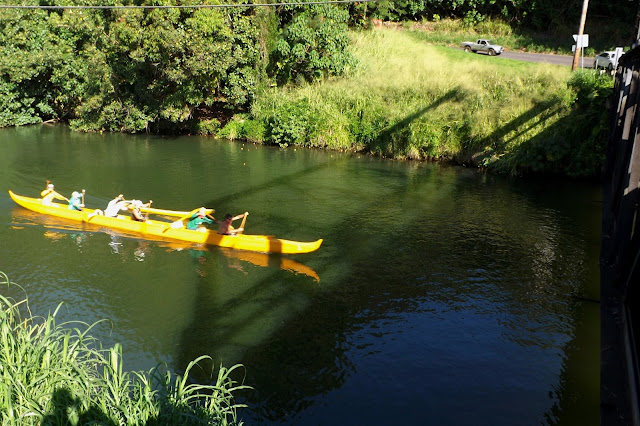Winter training on Hanalei River
So the blog is largely about my activities unless Gil is paddling. Only because we usually don’t have photos to support his daily role as the Prince of Princeville in home repairs.
Oddly, one thing we have always noticed is that topics needing attention come in clumps. When I was in practice, I would have several different people show up with shoulder afflictions, for instance. Well, it occurs in home afflictions as well. Gil will be called to several homes in a row for leaky faucets, or this week it was propane tanks for BBQ grills - three of them; unrelated. Go figure.
Oddly, one thing we have always noticed is that topics needing attention come in clumps. When I was in practice, I would have several different people show up with shoulder afflictions, for instance. Well, it occurs in home afflictions as well. Gil will be called to several homes in a row for leaky faucets, or this week it was propane tanks for BBQ grills - three of them; unrelated. Go figure.
Anyway in an effort to have him present in the blog I went to the Hanalei Bridge Togo Hanalei Valley
Waiting for Gil & Togo to reach me, I enjoyed all the other traffic above and below the one lane bridge and across in the taro.
Hawaiian Coot with white frontal shield obvious
Hawaiian Moorhen with red frontal shield
a little sun glare gives this photo a smoky look
Hawaiian Goose or Nene
He looks like he's in the water but actually standing on the dike
He looks like he's in the water but actually standing on the dike
Lining my shot up, I practiced on some other river folk before they passed under the bridge. And while I was at it, I got the cars crossing, too.
This stand-up paddler happened to look up as I snapped
Kayaking - I think this is the stand-up kid's dad, mom's kayak was stuck in the bushes
With a good steersman, it's fun to dodge the tourists in a 6-man canoe
This is Jason steering for Hanalei Canoe Club
Cars can only go in one direction on this bridge, so they take turns
The down-hill row will start now
Gil & Togo
Here they come. Under the bridge heading for the wire where the river gets too overgrown and shallow to continue. They will return to the bridge and then turn around for another run to the wire and back – sprinting from one telephone pole to the next.
Meanwhile on the bank, the coot has chased the moorhen out of the pond while the nene looks on.
Traffic on the bridge is non stop, a sunny Sunday in Hanalei
By the time Gil & Togo head back again, three of the club’s girls are heading upstream too. Busy on the river. We have all been seeing more large sea turtles upriver this year than ever before and of course if we go early enough, we might see buffalo grazing above us in the pasture.
There is no organized practice in the winter - only the hard core keep up their training,
the ones that think training is just fun!
Here they come again, hogging the road, hitting it hard
Last run down river - about 2 1/4 miles to the club
Holiday Rental Cars
Notice the cars waiting for the bridge – one event of the holidays was that the island ran out of rental cars. A friend of ours reserved a car for a month and when she got here they told her she could have it for two weeks so she is walking, and loving it. Another friend gave her sister her car and she is riding a wreck of a bike. They said cars would be available in a coupe days and the day rate would be $225! ‘Tis the season.
Hanalei Pier
In July I posted a note at the end of the Open Water Swim event about the local Rotary Club raising money to restore the roof on the pier. They got the money, they got the tear-down complete and the materials ordered. Guess what? The state has now offered to reimburse them the costs and will put up the new roof! If you want it done, do it yourself. The state was just happy to avoid the red tape.
The weather has fluctuated between cloudy and chilly with rain to bright, hot sun. The surf has also disappeared or been really big. It’s (almost) all good.



















































